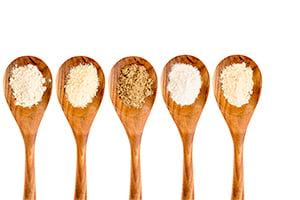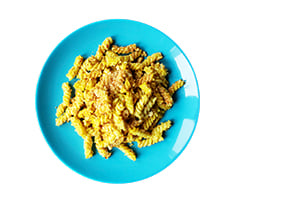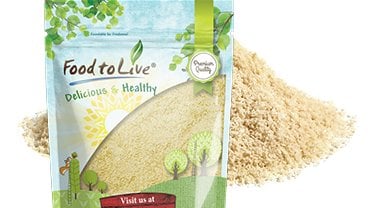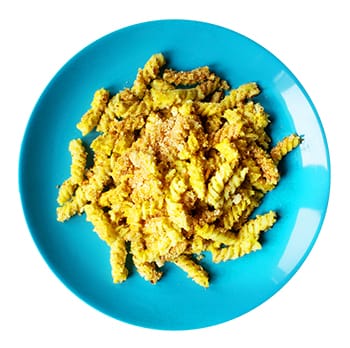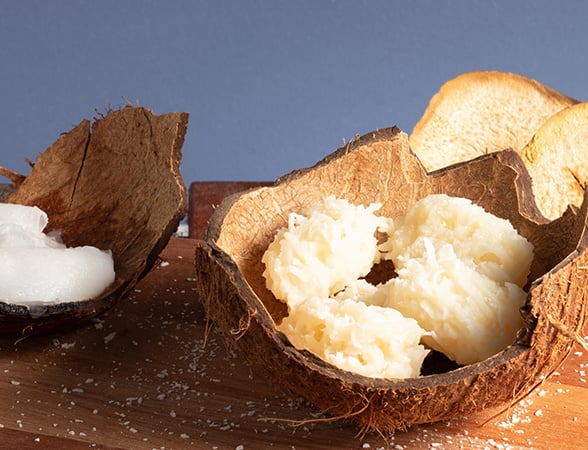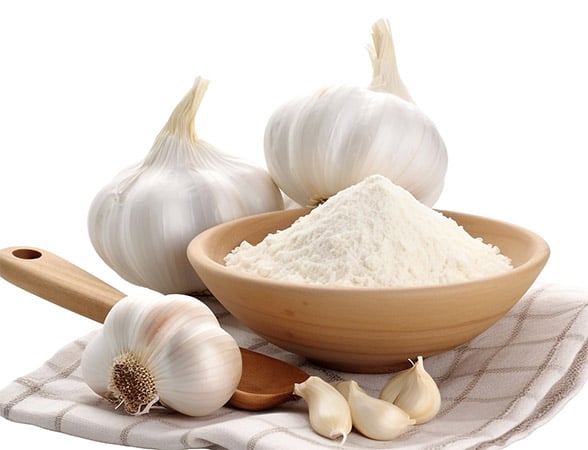February 22, 2020 · Written by Foodtolive Team
Cassava Flour vs. Tapioca Flour: Differences, Benefits and Uses
Are you looking for healthier and gluten-free alternatives to common flours? Then you will love yucca, a starchy and fibre-rich tuber plant similar to sweet potatoes, from which you can obtain cassava flour and tapioca flour, which are healthier and gluten-free options.
Both flours have many similarities and share many properties and often used interchangeably. However, these ingredients are distinct products with different uses.
You are going to learn why they have been a staple in several parts of South America and Asia, especially cassava flour, the same reasons that are making it extremely popular in the fitness community.
You will find all about them below.
Cassava flour and tapioca flour originate from the yucca plant, a starchy, fibre-rich tuber plant similar to potatoes and plantains. Cassava flour, in particular, has been a staple in parts of Asia as well as South America. Now, it has gained popularity among those looking for a nutritious alternative to flours containing gluten and nuts.
Here’s everything you need to know about cassava and tapioca flours.
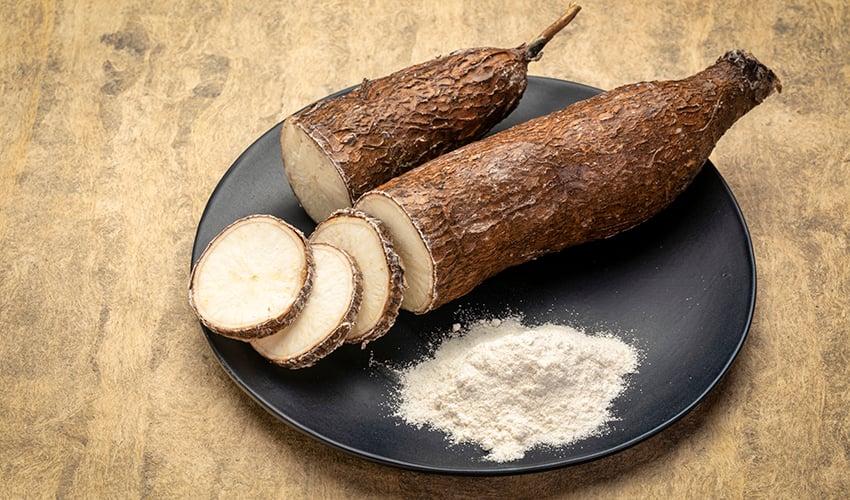
Differences in Processing and Flavor
Both flours come from the same plant, but their processes are different, and in consequence, the flavor also differs.
More Fiber, Nutty Taste
Cassava flour uses the whole blanched part of the yucca root – which has a simpler makeup than tapioca – and then it is dried and ground to create a flour of fine texture which is an excellent substitute for recipes that use wheat flour.
Since cassava flour comes from the entire root, it contains more fibre, and therefore, it supports your digestive system, controls your levels of sugar blood and lowers your cholesterol levels.
If you love to bake, then you will love this flour, because it enhances the texture of the food. In addition, it adds a mild and delicious nutty taste to recipes.
Starchy, Flavorless
Tapioca flour uses a process called washing and pulping, where the root is grated and rinsed, leaving behind starchy water. When the water evaporates, it leaves a white residue, which is the tapioca flour.
Unlike cassava flour, it has no flavor, which makes it excellent if you want to preserve the original flavor of your recipes, being similar to corn starch and similar products.
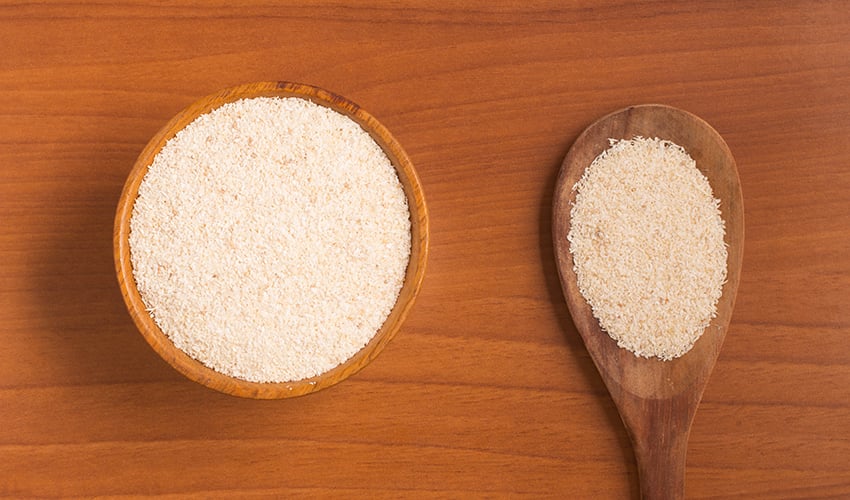
Nutrition: Which Is Healthier?
Both starches offer more nutrition than flours containing gluten, and therefore, they have been popular alternatives in the fitness community.
Cassava Flour: More Protein, More Minerals and Vitamin C
Cassava is a nutritionally rich starch compared to other flours. When cooked or dried, the plant leaves can hold as much as 25% protein. However, compared to other root vegetables, cassava lacks the same nutrition.
Here is the nutritional profile for one cup of cassava flour:
- Calories: 330
- Protein: 2.8 grams
- Carbs: 78.4 grams
- Fibre: 3.7 grams
- Calcium: 33 milligrams
- Magnesium: 43 milligrams
- Potassium: 558 milligrams
- Vitamin C: 42.4 milligrams
It also contains high levels of vitamin C, thiamine, riboflavin, and niacin. Since the flour itself has low amounts of protein and fat, you should supplement your diet with additional nutrients, in case you want to start using it.
Although it is a healthy substitute for many dishes, cassava flour is extremely high in carbohydrates. Therefore, use it with moderation if you’re following a keto, paleo or low-carb diet.
Besides having a range of nutrients that contribute to healthy body functions, other health benefits of cassava include:
- Aids with digestion. This food is an excellent source of resistant starch, a compound similar to soluble fibre that promotes healthy digestion. It can also help you to lower inflammation, specifically in the gut, and promote feelings of fullness throughout the day.
- Suitable for weight gain. If you are trying to gain weight, calorie-dense cassava flour can help. Since it is rich in carbohydrates, it is excellent for weight gain.
Tapioca Flour
While gluten-free, tapioca flour has less nutrition than cassava flour, 100gr of it has 360 calories, the majority of which are carbs. Nonetheless, it is still a decent gluten-free starch.
Here’s what to expect from 100 grams of tapioca flour:
- 358 calories
- Protein: 0.19 grams
- Carbohydrates: 88.69 grams
- Calcium: 20 milligrams
- Iron: 1.58 milligrams
- Potassium: 11 milligrams
Unlike cassava, tapioca contains only .9 grams of fibre and nearly no vitamins and minerals. Despite its low nutritional value, this food does have several health benefits:
- Easier on the stomach, help your bowel health. Since it doesn’t contain gluten, tapioca flour is easier to digest than other starches. It can also act as a good source of calories if you suffer from IBS and other bowel problems.
- Excellent source of calcium. With 20 milligrams of calcium, tapioca can help you to meet the daily recommended calcium intake. Calcium is essential for bone and teeth health, nerve communication, and blood clotting, which will boost your health.
- Rich in iron, stay away from anemia. Iron is a critical element in hemoglobin, which carries oxygen throughout the body. When your body doesn’t have enough iron, it can develop a deficiency and lead to anemia. This condition causes shortness of breath, fatigue, and chest pain. Tapioca will help you to prevent it.

Are Cassava and Tapioca Flours Interchangeable?
Cassava flour can be used in many of the same instances that call for tapioca flour. Cassava’s rich fibre content makes it a better choice for baked goods, especially ones that need structure to rise.
The lack of fibre in tapioca flour makes it less versatile, so it won’t work as well as cassava in baking. However, the fibre makes cassava a great thickening agent and ideal for dredging foods before frying or baking.
How to Use Cassava and Tapioca Flours?
In its raw form, cassava can be toxic to people, so it’s important always to peel and cook the root before eating. The primary way that people around the world enjoy this ingredient is cooking or boiling it.
Cassava flour is perfect for adding fibre to any baking recipe, as well as baked goods that need structure, such as bread and pastries.
Here are just a few of the many recipes for cassava flour:
- Tortillas
- French fries
- Mashed cassava
- Baked cassava chips
- Coconut sauce
- Yuca con moja
When you need a gluten-free binder or thickening agent, tapioca starch works very well. It is commonly used in bubble tea and pudding.
Additionally, it can also be used for foods like flatbread, where there isn’t a need for rising. It can also be useful for substituting cornstarch or rice flour for thick and creamy soups and sauces.
Get The Best Cassava and Tapioca Flour at Food to Live
Want to feel the incredible benefits of cassava flour yourself? Then check out the Food to live store to buy your own organic cassava flour and other delicious and nutritious foods!
The perfect way to enjoy your holiday treats guilt-free!

